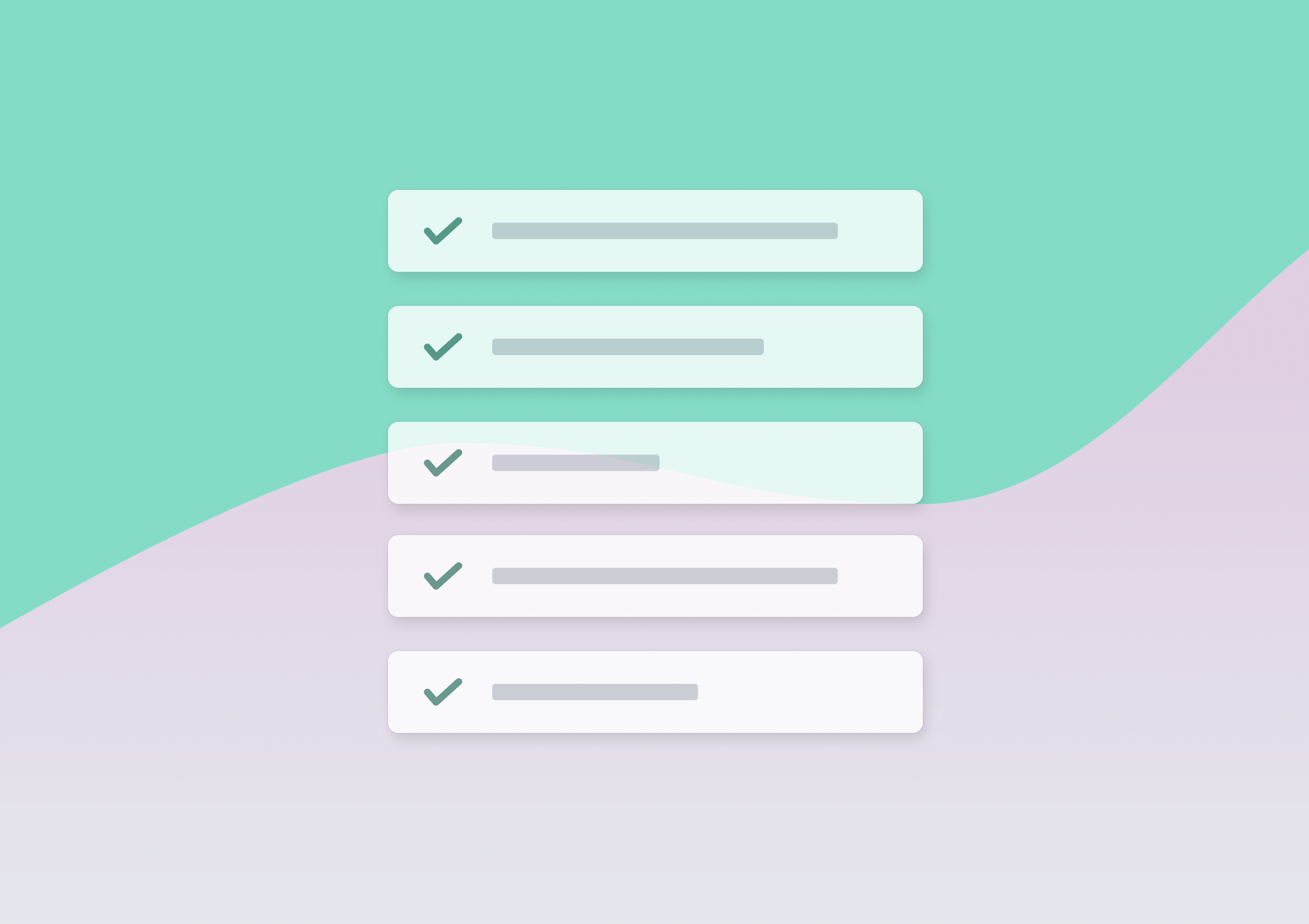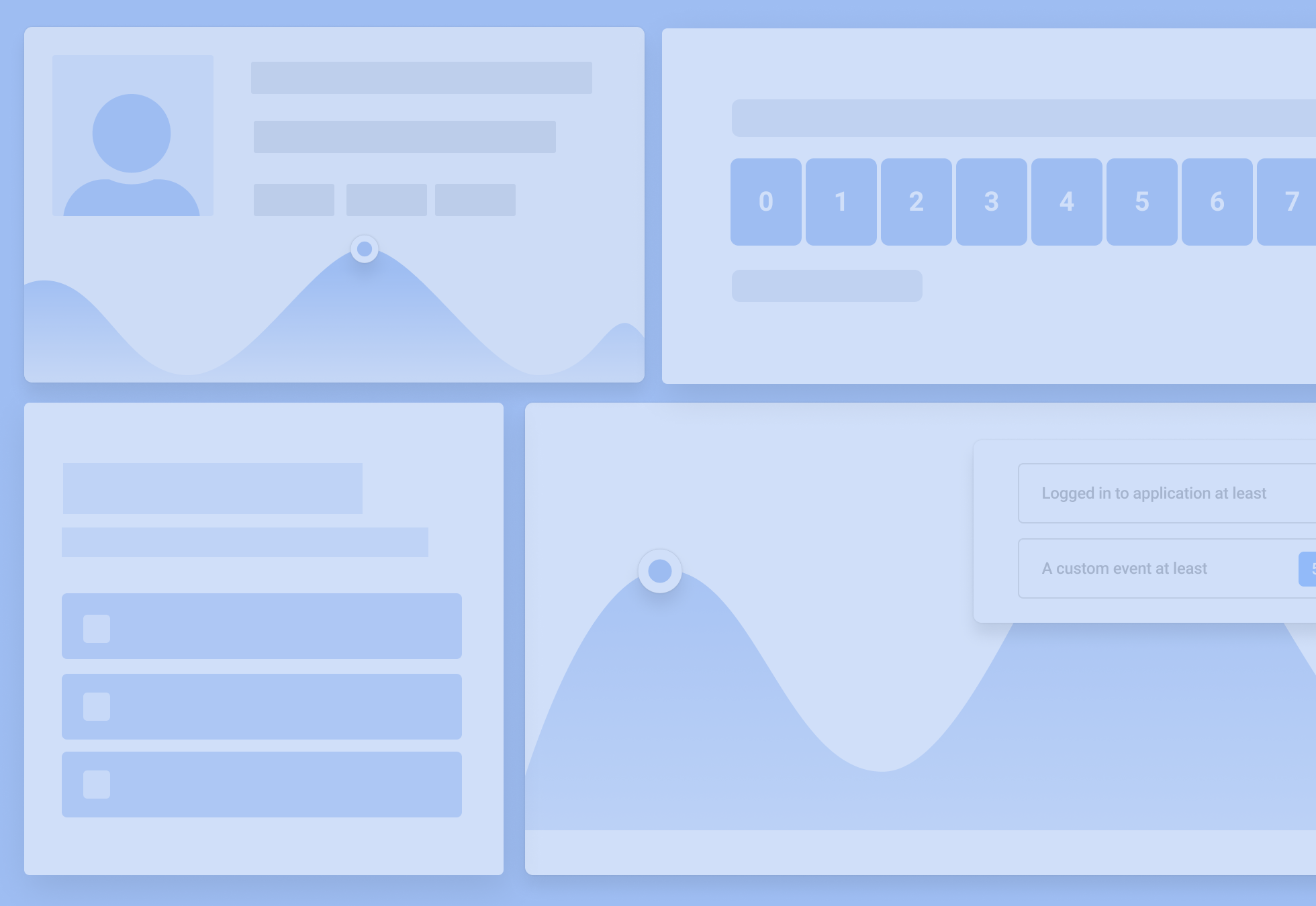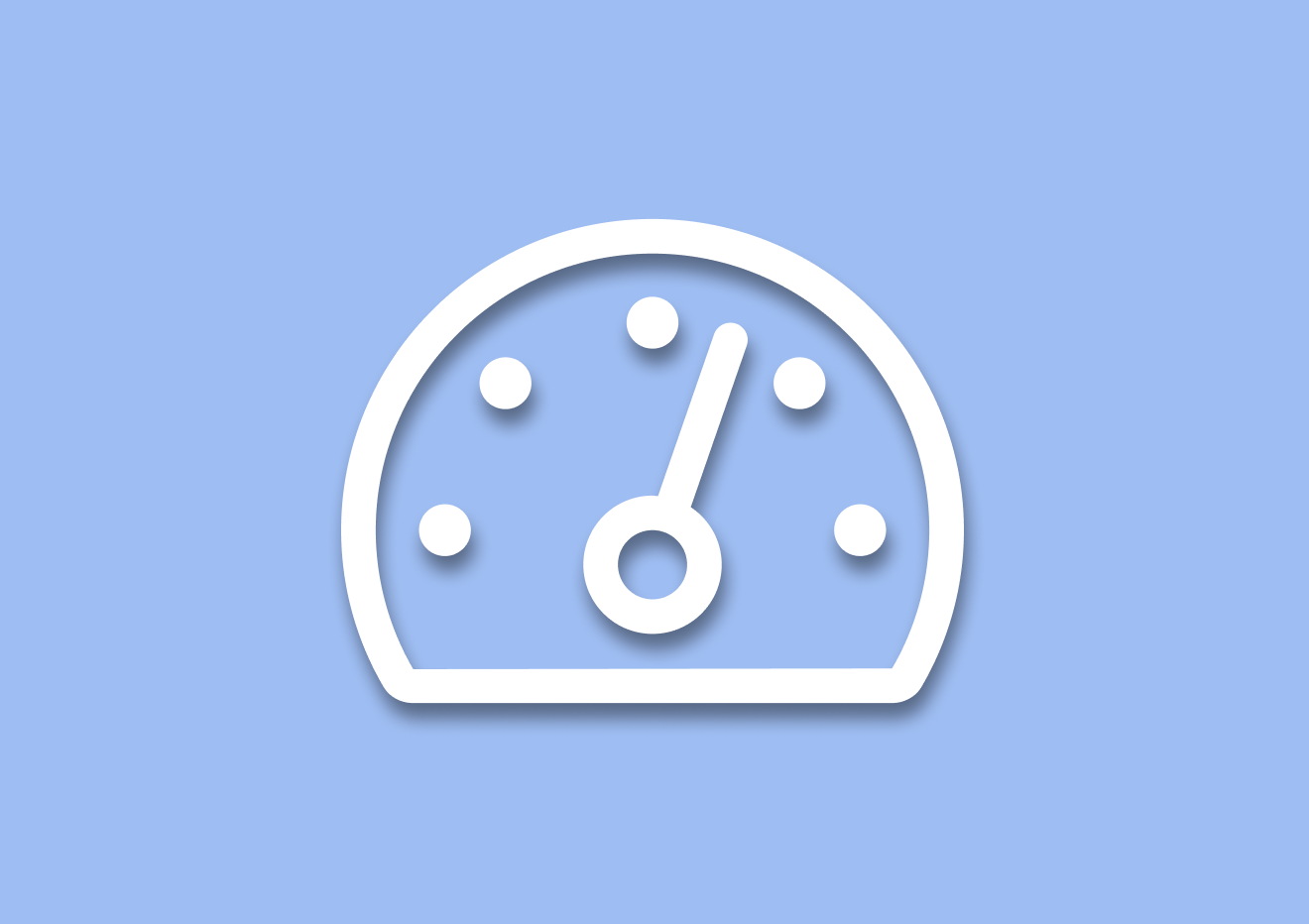In-app NPS Surveys: How to Create and Run In-app NPS in Your App
Learn how to run targeted, high-response in-app NPS surveys inside your product, with examples, best practices, and setup tips.
TL;DR
- An in-app NPS survey captures feedback while users are active
- It gets higher response rates than email-based NPS
- I’ll show you how to do it right, with examples and tips from real SaaS teams
FACT: Email NPS surveys get ignored. Survey links rarely get clicked. But in-app NPS surveys … well, that’s one survey type guaranteed to get answers.
Why? Because by asking users how likely they are to recommend your product while they’re using it, you capture more honest, in-the-moment feedback.
In this guide, I’ll walk you through how to run effective in-app NPS surveys that actually move the needle.
But to do that, we need to begin at the beginning…
Why Use In-App NPS Surveys?
💡 Definition: An in-app NPS survey is a Net Promoter Score question shown inside your product while a user is actively engaged with it.
There’s something truly incredible about an in-app NPS survey…
It’s that one survey type that’s always in-context.
Think about it; in-app NPS reaches users while they’re locked in, doing whatever they need to do in your product. And so, they’re also thinking about what’s working, what’s broken, and whether they’d ever tell a friend about it.
It’s the one reason why in-app NPS delivers insane response rates. And why the feedback is clearer, sharper, and easier to act on.
So, in a nutshell, you run in-app NPS because of:
- Higher response rates compared to email surveys or other survey types.
- Better timing, since users are actively using the product.
- Richer context behind each score
- Smarter segmentation, targeting based on user behavior
- Real-time insights that lead to faster decisions
In fact, here’s a full comparison of the differences between an in-app NPS vs. traditional, email NPS.
In-App NPS vs Email NPS: Quick Comparison
| Feature | In-App NPS | Email NPS |
|---|---|---|
| Timing | While user is active in product | After the fact, often disconnected from experience |
| Response Rate | Higher (often 20–30%) based on our 2025 in-app NPS response rates report | Lower (typically 5–15%) |
| Context | Captures real-time sentiment | May rely on memory or mood |
| Targeting | Based on behavior, plan, usage | Limited targeting unless using advanced email setup |
| User Experience | Seamless, native to the app | External, often interruptive |
| Setup Speed | Minutes with a tool like Refiner | Slower, needs email platform integration |
Use this as your cheat sheet. If you’re still sending NPS surveys through email only, you’re probably missing the moment that matters most.
But of course, these results don’t just magically happen.
Here’s what makes in-app NPS work so well, specifically:
- Asking NPS questions in context. Trigger the survey after onboarding, or when someone finishes a key workflow.
- Targeting the right users. Don’t blast it to everyone. Segment by plan, usage, or lifecycle stage.
- Keeping the in-app NPS ridiculously short. One question, one follow-up. That’s enough to get signal without annoying anyone.
(BTW, we will cover more of in-app NPS best practices later in this guide.)
When and Where to Trigger In-App NPS Surveys
It’s funny how we often think that when you trigger a survey doesn’t actually matter.
Users will see it when they see it, after all, and that’s that.
But actually, timing, frequency, and survey placement matter more than you think. You can have a beautiful survey design, perfect wording, and still get bad data if you show it at the wrong time.
When to trigger in-app NPS survey
💡 Definition: Net Promoter Score (NPS) measures customer loyalty by asking how likely someone is to recommend your product on a scale of 0 to 10.
So, good in-app NPS starts with timing. You want to ask when the user has had a chance to experience your product’s value, but before they drift away.
In other words, trigger the in-app NPS too early and you make them confused. Show it too late and they’ve already checked out.
Here are a few timing strategies that work particularly well with in-app NPS:
- After onboarding ends. Rather than displaying it immediately after signup wait until they’ve seen what your product can do.
- After three or more sessions. This gives users time to form an opinion about your product (and perhaps even reach the activation point.)
- Post-feature adoption. Trigger in app NPS based on usage of a key feature (e.g. completed a campaign, integrated with another tool).
- At regular intervals. For long-term users, ask every 90 days or so to track sentiment over time.
How to segment users for in-app NPS
It’s not just when you ask, but who you ask, too.
Targeting is just as important as timing. For example, with Refiner, you can segment users in so many ways: by plan, lifecycle stage, activity level, and more.
This means you can:
- Ask trial users and paid users different questions
- Avoid bothering inactive users who aren’t ready to answer
- Track how sentiment changes between user segments
You can even trigger surveys based on events. For example, “User completed onboarding AND logged in 5 times.” That’s the kind of precision you need to get clean, usable data.
And because Refiner runs directly inside your app, it’s fast. The survey appears right when you want it to, styled to match your product, and disappears when it’s done.
The result? Higher-quality feedback and happier users who feel heard.
This is where most teams go wrong. They drop the survey randomly. Or send it to everyone. Don’t do that.
Get the timing right. Get the targeting right. And the rest gets easier.
How to Create an In-App NPS Survey
We’ve covered a good bit of theory around in-app NPS surveys. But naturally, theory is one thing but practice – creating, launching, and collecting valuable feedback with in-app NPS is something completely different.
So, let me show you what the process actually looks like, using my in-app NPS tool, Refiner, as an example.
1. Create a new survey
The first step is quite obvious.
Sign up, go to the Survey’s section in the navigation, and hit “+ Create Survey.”

You will be asked to choose one of the two in-app survey destinations: Mobile or Web App.
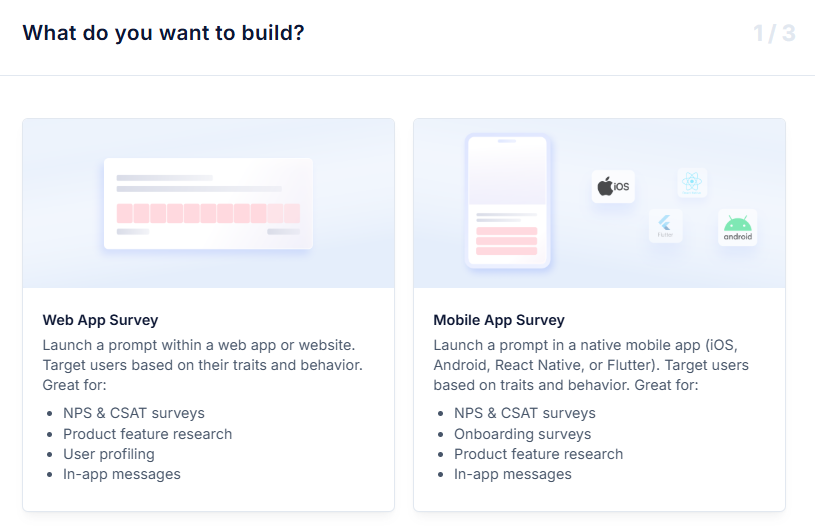
Both display in-app NPS, and the main difference between them is where you use them: inside your web application or in a mobile app.
Once you select the destination, choose “NPS” from the list of templates. Refiner will generate the standard 0–10 scale and open-text follow-up question for you.
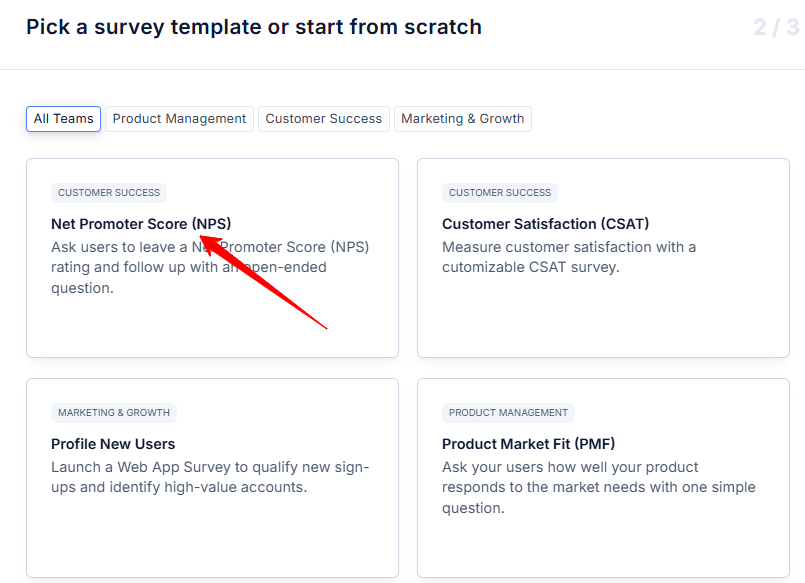
Done. Your survey is practically ready to go.
However, you can take it further by customizing several options:
2. Style the survey widget
Refiner let’s you customize the in-app survey widget to match your brand and product.
You can:
- Fine-tune (or completely change) the primary NPS question.
- Add additional questions to the survey, if needed.
- Tweak the color theme, or create a completely custom one.
- Change fonts, add rounded corners to the widget, borders, and more.
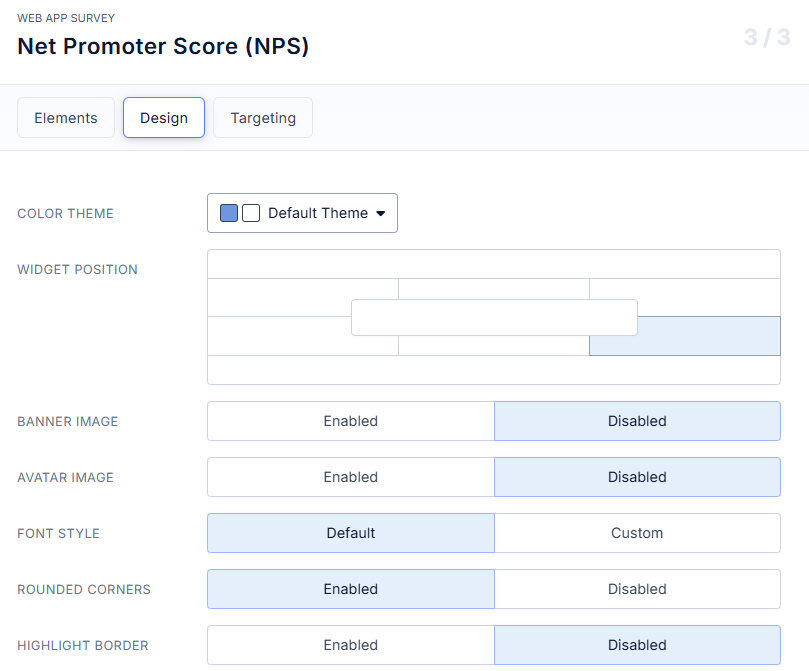
All these options help you make the in-app NPS widget feel native.
And it helps. Nobody wants to click through a jarring pop-up that looks like it was copy-pasted from another tool, after all. Or one that seems so out of place that it gives the impression that the app’s been hacked.
3. Set up targeting rules
We’ve already talked about how important survey targeting is for the in-app NPS success. And tools like Refiner allow you to segment users in several possible ways:
- User segments. You can target users by plan type, lifecycle stage, signup date, or custom properties.
- Events. Trigger based on what users do in your app (e.g. completed onboarding, created a report, hit feature X).
- Behavioral logic. Combine segments and events to pinpoint just the right audience.
Which one you use depends on what type of user segment you want to target, of course. But the key thing is to actually take the time to define and create those custom segments to trigger in-app NPS for.
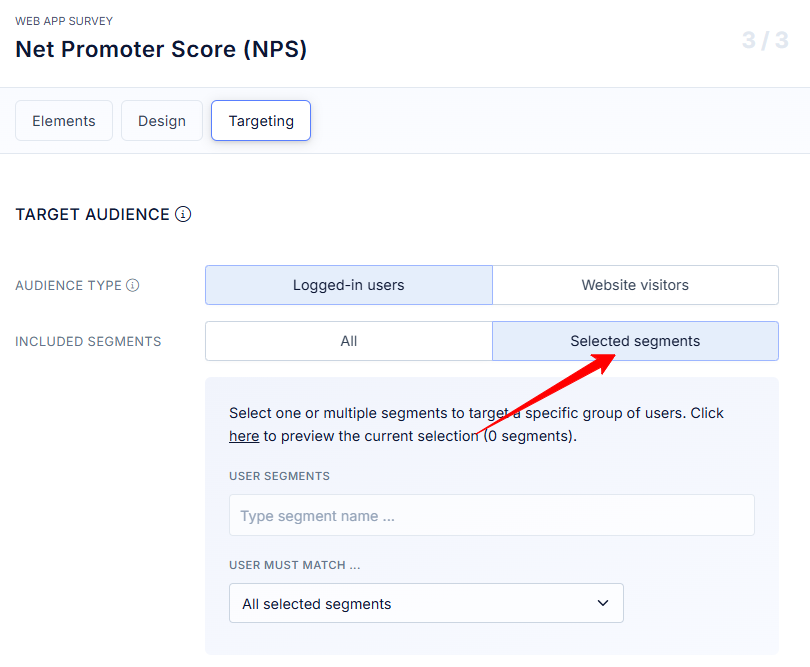
4. In-app NPS timing
With in-app NPS, you control the timing. There is no default time to trigger the survey. It’s up to you.
Do you want it to show up after 3 logins? Only on desktop? Only for users active in the last 7 days? You can do that.
And don’t worry about nagging people. Set frequency caps so they only see it once every 90 days, or only after specific actions.
5. Publish it and start collecting responses
Once everything’s in place, go live. Refiner will start showing the survey and collecting data in real time.
You’ll see scores flow in almost immediately, along with written feedback. From there, you can slice and dice the data by segment, trend, or score range.
In-app NPS: Best practices and common pitfalls
Most teams either overthink NPS or set it up once and forget it. Unfortunately, neither approach truly works (or at least, they rarely deliver the maximum potential result from an in-app NPS survey.)
So let me quickly show you what works, and what to avoid, when you’re running an in-app NPS.
What works
- Keep it short. One question, one follow-up. With in-app NPS, you don’t need a survey page. You need a pulse check.
- Make it native. Match the styling to your product. Users trust it more when it feels like part of the experience.
- Time the in app NPS right. After onboarding, after a feature is used, or after a few sessions. Never too early, never too late.
- Segment your audience. Power users, new users, churn risks…they all give different kinds of feedback. Treat them differently.
- Use follow-up logic. Ask why they gave that score. The “why” is often more valuable than the number.
- Act on it. Even a quick follow-up email to a detractor shows you care. It builds trust. It can help overcome their objections, too. Or at least, prevent them from spreading negative word-of-mouth about your product.
What to avoid
- Triggering the survey too soon. If users haven’t done anything meaningful in the app yet, their score is noise.
- Asking everyone. Not every user is ready to answer. You’ll get better data with targeted surveys.
- Ignoring the qualitative data. The written feedback is where the gold is. Don’t just chase the number.
- Letting it go stale. Review your NPS setup regularly. Are the triggers still relevant? Are you still learning something new?
- Surveying too often. You don’t need a new score every week. Most teams check in quarterly or after key events.
Your NPS setup isn’t just a feedback tool. It’s a conversation. The more thoughtful you are about how, when, and why you ask, the more useful the answers will be.
And that’s it…
That’s all you need to know about in-app NPS surveys.
All that’s left is to get started collecting NPS feedback in your app.
Good luck!
In-app NPS: FAQ
It’s a Net Promoter Score survey that appears inside your product while the user is actively using it. Not in their inbox. Not in a popup on your homepage. Right where the value is happening.
Well, it boils down to timing and context. In-app surveys reach users when your product is top of mind. That leads to more responses and better feedback. Email surveys often show up after the moment has passed.
After onboarding is finished. After a user completes a key action. Or once they’ve spent enough time in your product to form an opinion. You want them engaged, not brand new or halfway out the door.
Most SaaS teams run them every 90 days, or after specific events like onboarding or feature adoption. You don’t want to overdo it. A good NPS rhythm gives you signal without causing survey fatigue.
I may sound biased here, but Refiner is purpose-built for this. It lets you target the right users, trigger surveys based on real product usage, and analyze results without digging through spreadsheets. You can launch your first survey in minutes.
Look beyond the score. Read the comments. Spot trends. Share insights with your team. Close the loop. Great teams act on NPS feedback instead of just reporting it.

